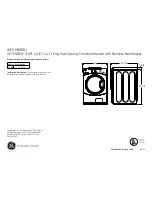
Loading the dishwasher
35
General information
Remove coarse food residues from
dishware.
There is no need to pre-rinse items
under running water.
Damage can be caused by ash,
sand, wax, lubricating grease, or
paint.
These substances will contaminate
the dishwasher and can then no
longer be removed.
Do not wash items soiled with these
substances in the dishwasher.
Dishware can be loaded anywhere in
the baskets, but the following notes
should be observed:
- Do not place dishware and cutlery
inside other pieces where they may
be concealed.
- Load dishware so that water can
access all surfaces. This ensures that
dishware will be properly cleaned.
- Make sure that all items are securely
positioned.
- Hollow items such as cups, glasses,
and pots should be placed upside
down in the baskets.
- Tall, narrow, hollow items such as
champagne glasses should be
placed in the centre of the basket
rather than in the corners. This
ensures the hollow items are more
easily accessed by the water jets.
- Wide based items should be placed
at an angle so that water can run off
them freely.
- The spray arms must not be blocked
by items which are too tall or hang
through the baskets. Test for free
movement by manually rotating the
spray arms.
- Make sure that small items cannot
fall through the holders in the
baskets.
Small items such as lids should
therefore be placed in the 3D
MultiFlex Tray or cutlery basket
(depending on model).
Some foods such as carrots,
tomatoes, or ketchup may contain
natural dyes. These dyes can
discolour plastic items in the
dishwasher if large quantities of these
foods are in contact with the dishware
inside the machine. The stability of
plastic items is not affected by this
discolouration.
Washing silverware can also cause
plastic items to discolour.
















































